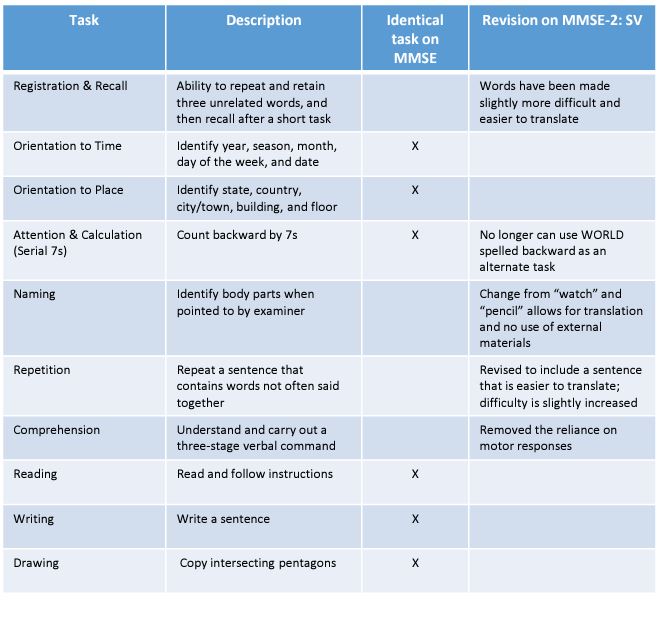Screens for cognitive impairment
Marshal F. Folstein, MD, and Susan E. Folstein, MD; User's Manual by Marshal F. Folstein, MD, Susan E. Folstein, MD, Travis White, PhD, and Melissa A. Messer, MHS
A Quick Cognitive Test When You Are Concerned about Alzheimer's Disease, Dementia, or Cognitive Decline
With a standard version that is equivalent to the original MMSE and brief and expanded forms, the MMSE-2 retains clinical utility and efficiency while expanding the original’s usefulness in populations with milder forms of cognitive impairment, including subcortical dementia. Useful to screen for cognitive impairment, to track patient progress, and to predict general functional independence in elderly individuals.
Features and benefits
- Flexibility of administration. With three different versions available, you can select the version that best fits your patients’ needs.
- Standard Version (MMSE-2:SV), 15 minutes to administer -- a revision of the original MMSE with replacement of problematic items.
- Brief Version (MMSE-2:BV), 5 minutes to administer -- use to conduct rapid clinical assessements and to screen individuals for large population studies.
- Expanded Version (MMSE-2:EV), 20 minutes to administer -- includes two additional tasks, story memory and processing speed, that are more sensitive to changes associated with aging.
- Simplicity of administration. All versions may be administered by anyone who has been trained to test individuals with cognitive impairment and who is familiar with the administration instructions. It may be used by physicians, medical students, psychologists, psychology technicians, nurses, student nurses, social workers, and trained research workers. No special equipment is required.
- Simplicity of scoring. Forms are user-friendly and easy to score in just 5 minutes.
- Portable Pocket Norms Guide. T-score conversion tables, reliable change scores (at three levels of statistical significance), and mean raw score tables are provided in both the User’s Manual and the handy Pocket Norms Guide.
- Equivalent, alternate forms. Blue and Red forms enable you to retest the same patient with reduced practice effects.
- Clinical relevance. Items have obvious relationships to functional ability in daily life.
- Expanded meta-analysis. The meta-analysis of studies using the MMSE that appeared in the original MMSE Clinical Guide has been expanded to incorporate studies published between 2001 and 2009 and includes effect sizes.
Available in other languages
Note: In order to use a modified version of the MMSE–2, including a modified format or translation, please download and complete the Permission Request Form.
